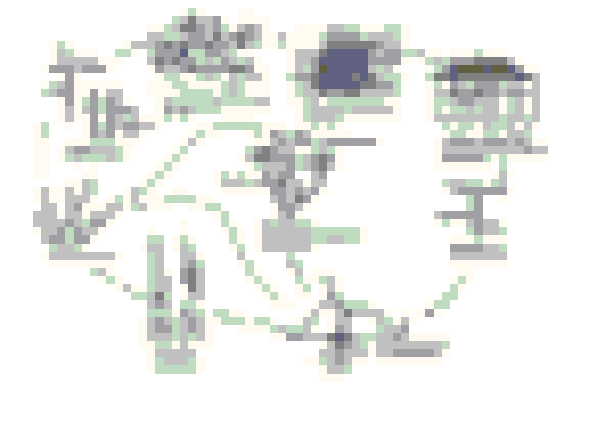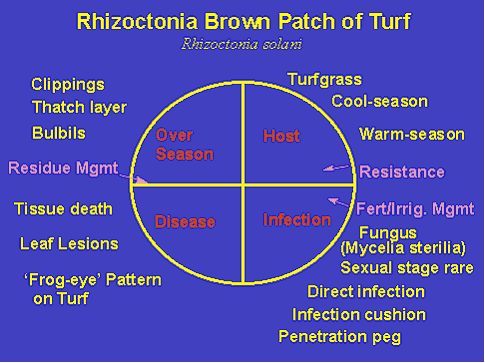Description:
Patches that are often circular up to several metres across with stunted plants. The roots are much shorter than those of healthy plants of the same age. The roots are often pointed or spear shaped at their ends where the disease has rotted them off. The stem has a dry brittle rot at or above ground level that cause the plant to wilt and die at the seedling or early vegetative stage. Affected plants may re-shoot from below the diseased section of stem.Canola
Affects seedlings causing red brown to dark brown lesions on the hypocotyl as it emerges. The cotyledons turn red and the stem is pinched at ground level and often breaks off. Plants that survive to the 3-4 leaf stage often grow on successfully.Turf
In turf, the patches are brownish, usually circular, up to 1 metre diameter and may have a darker to black "smoke ring" edge. The grass in the centre of the patch may recover to give a dough nut shape or it may be taken over by algae and weeds.Beans
Reddish, sunken, elongated patches on stems just above ground level.Potatoes
New shoots may rot before emergence. Later infections cause red and yellow colouring of the leaves and the edges may curl upwards. Growth at the top of the plant may be bunched. Tuber may be malformed or have cracks and brownish black, irregular lumps (sclerotia) up to 8 mm diameter.Stocks
Wilting foliage and sunken lesions at the base of the stem with soil particles clinging onto the fine brown hyphae.Species Affected:
Most species are affected. There are many strains causing many symptoms.Biology:
Generally favoured by wet warm soils but in the case Potato Rhizoctonia Scab cool moist conditions favour the disease.Life Cycle:

Origin and History:
Distribution:Significance:
Rhizoctonia causes major yield losses in many crops.Management and Control:
Rotate to non susceptible crops for at least 2 years.
Brassica vegetables
Rotate area used as seed bed.Canola
Avoid zero tillage.Capsicums
Rotate area used as seed bed.Carnations
Before planting, fumigate areas that have previously grown Carnations.Lupins
Plant seed 2-3 cm deep at 120 kg/ha and provide adequate P and K.Potatoes
Fallow area before planting to allow plant residues to decompose.Turf
Avoid excess water and nitrogen.Related and Similar Species:
References:Acknowledgments:
Collated by HerbiGuide. Phone 08 98444064 for more information.